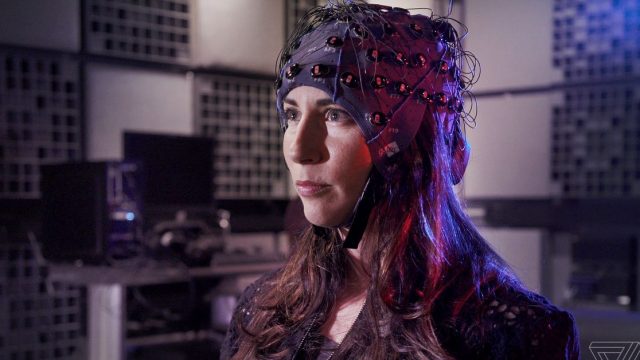Consider this my contribution to click-bait headlines for the year.
Some months ago The Verge posted a video about Dolby Labs (the technology company most closely associated with audio and video mastering) and their experiments using biosensors on movie watchers to collect raw data on their responses to the onscreen images. The link goes to a good six-minute video about the research and its implications (and an interesting insight on Pixar’s desire to create actual physical pain for the viewer during one part of Inside Out). The accompanying article summarizes thus:
Led by neurophysiologist and Dolby chief scientist Poppy Crum, the company has been attaching biosensors to willing subjects and plopping them down on a couch to settle in for an entertainment session. Using EEG caps, heart rate monitors, galvanic skin response sensors, and thermal imaging Flir cameras, the scientists can observe the biophysical and emotional responses that humans are experiencing via media. They’re trying to figure out what kind of videos and sounds make people’s hearts race, what makes their skin flush, and what makes them cognitively engaged, aroused, or maybe even… bored.
(Note: On a superficial level, I have a positive biophysical response to the words “chief scientist Poppy Crum.”)
Dolby’s research is primarily for company promotional purposes but the video asks the logical next question: could research like this could lead to tools that could guarantee emotional responses? What would that mean for filmmakers (not to mention advertisers) if they were given a blueprint for tears or gasps? What would it mean for audiences who, after all, sign up to be manipulated by images every time they sit down to watch something?
This is similar to research on pleasurable experiences in other fields like music. Watching this, I thought of the study that showed that participants who sampled wine not only stated preferences for samples they were told were pricier, brain scans indicated they actually were experiencing more pleasure when imbibing the “expensive” wine, even if the price was a lie. Does it matter how the stimulus is created if it creates a real neural response?
And so I throw it to you, Solutors. Is this bold research that could lead to the creation of new and exciting media experiences? A cold tool that could never replicate a good cry or thrill at the movies? Or just a bunch of marketing hokum?
Discuss, and I will evaluate my responses to your thoughts using this EKG readout.


